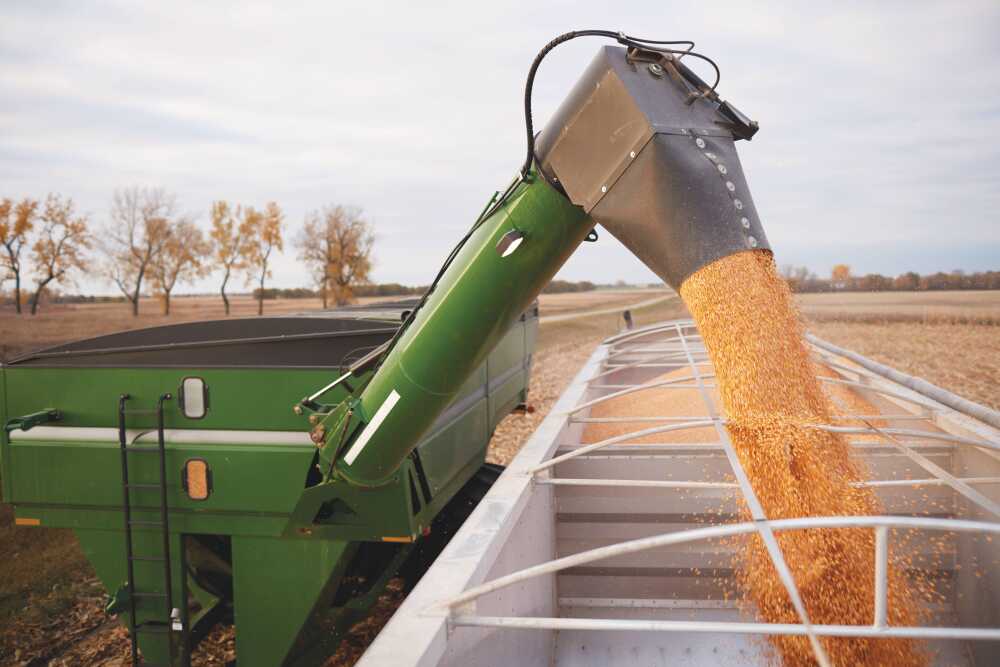Ag commodity prices rising, but input costs siphoning off profits

Farmers are receiving more for their row crops than in recent years, but that fact is not directly leading to more money in their pockets for a number of reasons.
From 2014 through 2020, agriculture commodity prices — what a farmer receives for cotton, soybeans, corn and other crops — tanked. According to U.S. Department of Agriculture figures:
* Cotton — 80 cents a pound in 2014 to as low as about 50 cents a pound; more than 90 cents a pound this year
* Corn — more than $7 per bushel in 2013 to just more than $3 a bushel from 2017 to 2020; more than $6 a bushel in 2021
* Soybeans — $14 a bushel in 2014 to below $9 a bushel in 2019 and 2020; near $15 a bushel in 2021.
And those trends look to continue, experts say.
Ben Brown of the University of Missouri’s Agriculture Business and Policy Extension team said farmers are in a “golden age of commodity prices.” In addition to weather events pushing prices upward, global market players, such as China, are propping up prices. Weather in South America has driven demand for U.S. soybeans, Brown contended.
“The world’s largest producer and export of soybeans, South America, has been plagued by two consecutive years of drought. The first year was especially hard on their corn crop, whereas, the second drought took roughly 900 million bushels off their soybean supply and vegetable oil is expected to be in high demand and is contributing to the overall demand for soybeans,” he explained.
Even with the drought conditions, South America is set to produce beans at near-record levels. An American Soybean Association report predicts production right at the all-time record.
The ongoing Russia/Ukraine conflict is affecting U.S. corn farmers.
“Ukraine and Russia account for about 24% of the world’s corn trade. A large portion of that has already been exported but not all. Many market analysts believe that the Chinese will again turn to the U.S. later this spring as a source of their feed grains and that is what has kept corn prices relatively high,” he said.
Brown said his forecasts call for average corn prices this growing season of slightly more than $5 per bushel, with soybeans at about $13 per bushel and wheat selling for about $7.25 per bushel.
Sometimes, though, even higher prices on futures markets don’t really help farmers. A report produced by the American Soybean Association noted that soybean prices in 2020 ranged up to $16 per bushel, but the national marketing year average price received by farmers was substantially lower, $10.80, meaning many farmers didn’t have crops to sell when prices were highest.
Input costs rising
Even with farmers receiving higher prices for their crops, though, their profit margin outlook is not rosy.
Brown said rising land costs, coupled with available funding, are sucking dollars out of the margin.
“In Missouri and surrounding states, we are seeing land transactions that are nearing 20% higher than they were two years ago. Why? Low interest rates and money to pay the high price,” he explained.
Other input costs are rising, too.
David Reinbott, a Scott County Extension field specialist in agriculture business, said crop-growing costs are significantly higher than in recent years.
“Since the 2021 crop year, input prices have doubled and tripled in many cases. Nitrogen has gone from 30 cents per unit to over a $1 per unit. The variable cost of irrigated corn, which includes seed, fertilizer, fuel, has gone up over $200 per acre from last year to $657 per acre. The variable and fixed machinery costs together, they have gone up over $220 per acre to $764 per acre,” he noted. “Farmers will have more gross dollars, but with input costs increasing the net dollars may not rise as fast or in many cases may be less. If farmers do have a profitable year in 2022, the net dollars will have a positive influence on the local economies.”
Supply chain issues have greatly hampered equipment sales, industry officials said.
Steve Plunk of Medlin Equipment in Charleston, Missouri, reported lead times for new tractors and combines can be as long as two years
“They are running a year or two out. ... Farm sales people who work on a commission basis, I’m not sure how some of them are going to make it,” he said. “Typically we have 125, 150 four-wheel drive tractors sitting on our yard. Right now, we may have 10.”
Barry Bean of Peach Orchard, Southeast Missouri representative on the Missouri Farm Bureau board of directors, said inflationary pressures have whittled away agriculture profits.
“We used to have ‘million-dollar rains.’ Well, we still do, but those are in 2022 dollars,” the cotton farmer joked. “So, we may be talking about ‘beans in the teens,’ but those ‘beans in the teens’ don’t mean what they used to.”
Bean said increased revenue from higher commodity prices has been eaten up by the double-whammy of higher input costs and a reduction in federal support. He said funding sent to farmers to offset effects of a trade war with China have stopped and COVID-19-related funding has also dried up.
“And that’s making farmers look for every efficiency they can and consider everything they can to bring in more revenue.”

